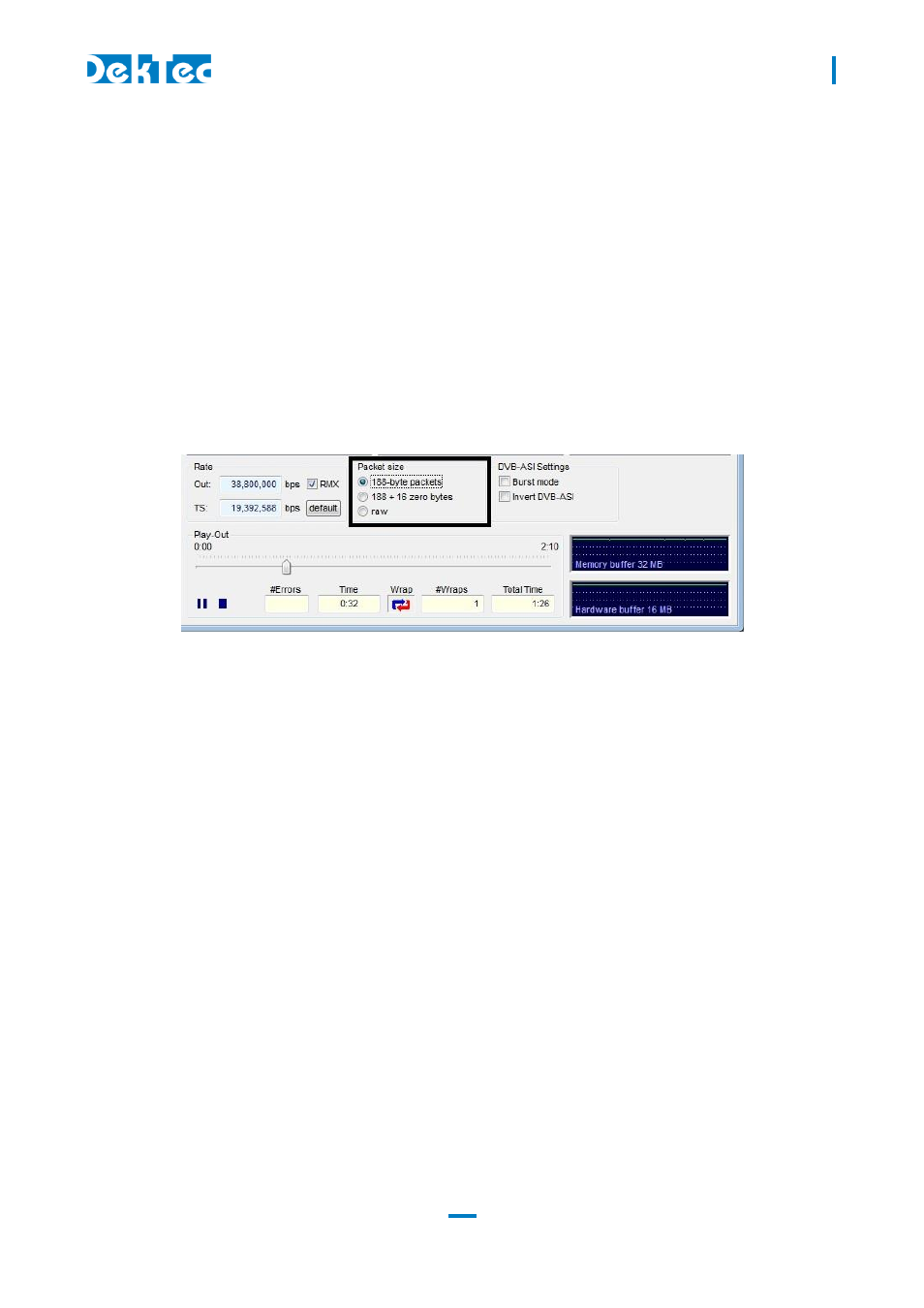3 dvb-asi settings – DekTec DTC-300 StreamXpress User Manual
Page 22

DTC-300-SP – StreamXpress
USER MANUAL
22
If the original file contains 204 byte packets, The user can choose to playout 204 byte packets
(Native) or 188 byte packets (188- 16 zero byte) or can play a file in raw format.
NOTE: StreamXpress will play valid Reed-Solomon if present in the original file.
NOTE: The TS rate will be different than the line rate as the 16 extra bytes are not used to calculate
the playout rate. The actual output rate will include the 16 Reed-Solomon bytes per packet if playing
204 bytes packets.
If the file is not formatted with either 188 or 204 byte TS packets, StreamXpress can play Raw. Raw
means that StreamXpress doesn’t care about packet size: anything can be transmitted. This works
for ASI or SPI, but not for modulators because these devices expect a packet structure. This is the
only way to playout ETI files over an ASI interface.
3.4.3 DVB-ASI settings
StreamXpress with playback over ASI using byte mode meaning that each byte is spread across the
270Mbits/s ASI interface. This mode is the safest mode as it spreads the data evenly without any
burst. Data bursts can create near instantaneous data rate hikes that may be difficult for ASI receiver
to handle.
StreamXpress allows to playback ASI in burst mode. In this case the interface will be sending
complete 188 bytes packets at a time. Click on the Burst mode tick box to select this mode.
ASI is very similar to SDI as it is a 270Mbits/s serial signal. One of the major difference between ASI
and SDI is that ASI is polarized, meaning that it has to be in a certain polarization for the data to be
received. Some older Distribution Amplifier (DA) will invert the polarization of the ASI data when
receiving and regenerating an ASI signal, causing the receiver not to be able to handle that inverted
ASI.
The StreamXpress software allows to playback inverted ASI which can be used to test a device
capability to handle inverted ASI or to feed an inverting DA (Creating a proper ASI on the output
side). Click on invert DVB-ASI tick box to select this mode.
